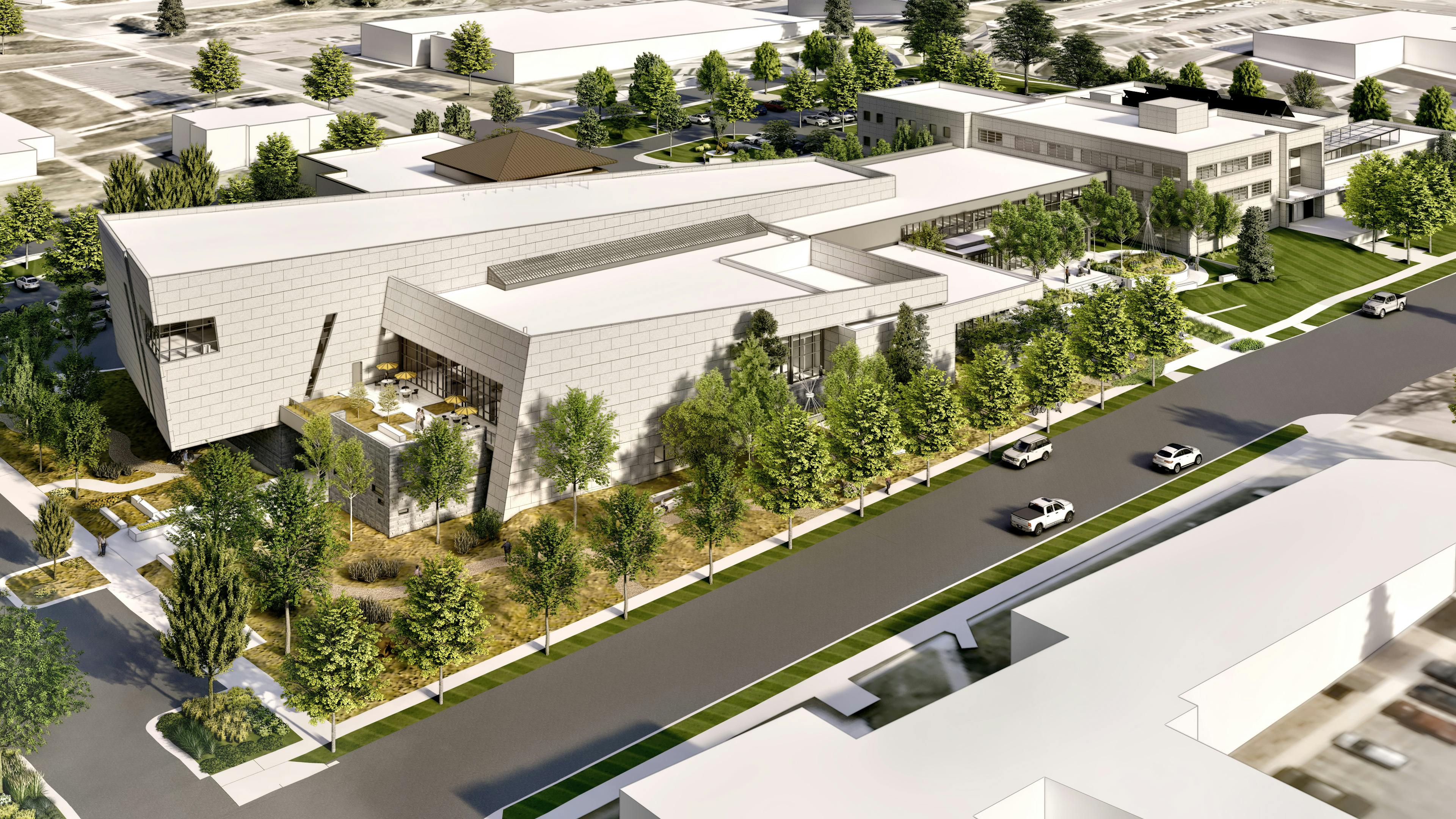Three Montana Sites Nominated to Historic Register

A bank in Billings, a block in Malta, and a flight strip west of Dell are the newest nominations proposed for listing in the National Register of Historic Places.
The Montana National Bank at the intersection of Broadway and Second Avenue North in downtown Billings is one of the city’s most recognized buildings.
The original Neoclassical Revival portion of the building was constructed in 1918 and designed by Omaha-based architect George B. Prinz. The building functioned as a financial center for nearly 60 years and played a key role in the growth of commerce and culture in the city.
Terra cotta elements emphasize the stylistic features on the three-story building, which includes a full-height monumental entry set off by slender columns, with scroll-shaped ornaments on the top, and an elaborate, tooth-like cornice. In 1952, the building was remodeled, and expanded with an “International” style addition constructed off its east wall.
“It’s an interesting melding of classical and modern elements,” said John Boughton, National Register coordinator at the Montana State Historic Preservation Office. “Yet the bank building easily continues to convey its historic and architectural significance.”
The Montana National Bank organized in 1912 and initially catered to cattle and sheep ranchers. Everything about the Montana National Bank building exuded strength, permanence, and optimism. Envisioned by the directors as a rock in the commercial district, it successfully fulfilled that role for nearly 60 years.
The Montana National Bank held an essential role in the City of Billings as the first prominent center of the community’s banking industry, agriculture, and later oil, gas, and coal development. From comfortable chairs in the customer waiting lounge to the ease of making deposits, obtaining loans, and other services, the Montana National Bank was, indeed, the “Bank for You,” a motto it promoted for most of its existence.
The bank changed its name in 1955 to First National Bank, and it continued to grow into the 1970s. By 1976, the bank had outgrown its old quarters and moved to a new 14-story building at the corner of Second Avenue. In 1977, it became First Northwestern National Bank, an affiliate of the Northwest Bancorporation.
Big Sky Economic Development currently is renovating the bank’s interior. Boughton notes that despite some recent renovations that removed remodel configurations and finishes, the lofty ceiling and perfect lighting still make for a grand entrance.
Edwards and McLellan Block
Northeast of Billings along the Hi-Line, the Edwards and McLellan Block in Malta consists of two commercial block brick buildings constructed by Lee Edwards and William McLellan in 1910. Family members owned the building until 1975, and while the business no longer is called Edwards & McLellan, the building operates much today as it did historically.
“The interior arrangement consisted of individual office space confined to the upper floor with the lower story dedicated to the operation of the mercantile,” Boughton said. “Through the years, upper story office space was rented to dentists, engineering and surveying companies, the Moore Telephone Company, investment firms, and attorneys. A similar strategy exists today, though instead of individual offices occupying the upper story, the rooms have been converted to lodging, with nearly all retaining their historic space and dimensions.”
Dell Flight Strip
Finally, in the southwest corner of Montana on a flat stretch of land west of Dell, is a 1943 flight strip. Constructed under the direction of the Montana Highway Department, the Dell Flight Strip dates to the United States’ entry into World War II.
At that time, the U.S. Army Air Force established satellite airfields in western states, as well as intermediate landing strips for emergencies while B-17 bomber crews were training. The Flying Fortresses required a minimum of 4,400 feet for take offs and landings.
The Dell Flight Strip nomination involves 16 features, including a 51-foot-tall revolving airport beacon, electrical shed, hangars, tie-downs, a jet fuel station, and a 1930s-era “privy,” complete with a crescent moon on the front and back gables. The runway is about 7,000 feet long by 75 feet wide.
“These flight strips were also intended for emergency use for the Women’s Airforce Service Pilots (WASP) who ferried American bombers destined for the Soviet Union to East Base in Great Falls,” Jon Axline, a Montana Department of Transportation historian wrote in the nomination form. He added that there’s no record of any Flying Fortresses landing at the airstrip, but other pilots have used it both for emergency landings; as a base for search and rescue operations; by crop dusters; and as a location for aircraft instructional classes.
“In the late 1940s and early 1950s, the flight strip provided the impetus for the construction of the Dell Airport Bar, a popular meeting place for dancing and other social events,” Axline noted, adding that the flight strip still sees about 950 take offs and landings each year.

